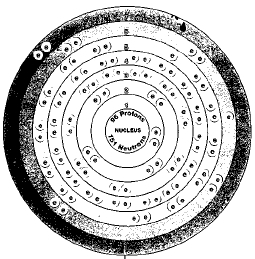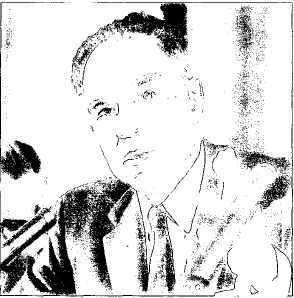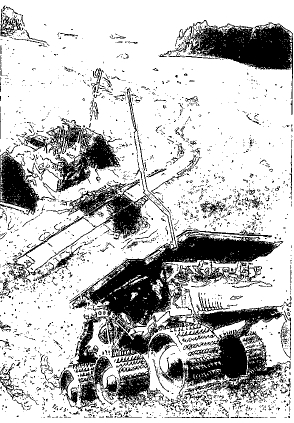CURIUM

Overview
Curium is called a transuranium element because it follows uranium on the periodic table. The periodic table is a chart that shows how chemical elements are related to each other. Uranium has an atomic number of 92, so any element with a higher atomic number is a transuranium element.
Curium was discovered in 1944 by Glenn Seaborg (1912- ), Ralph A. James, and Albert Ghiorso (1919- ). These researchers, from the University of California at Berkeley, were working at the Metallurgical Research Laboratory (MRL) at the University of Chicago where work on the first atomic bomb was being conducted.
SYMBOL
Cm
ATOMIC NUMBER
96
ATOMIC MASS
247.0703
FAMILY
Actinide
Transuranium element
PRONUNCIATION
CURE-ee-um
Discovery and naming
Curium was first produced in a particle accelerator at the MRL. A particle accelerator is also called an atom smasher. It is used to accelerate small particles, such as protons, to move at very high speeds. The particles approach the speed of light, 300,000,000 meters per second (186,000 miles per second), and collide with target elements, such as gold, copper, or tin. The targets break apart or combine with a particle to form new elements and other particles.

The first samples of curium were so small they could be detected only by the radiation they gave off. In 1947, the first significant sample of the element was produced. It weighed about 30 milligrams (about one-thousandth of an ounce). The element was named for Polish-French physicist Marie Curie and her husband, French physicist Pierre Curie. The Curies carried out some of the earliest research on radioactive elements.
Physical properties
Curium is a silvery-white metal with a melting point of about 1,340°C (2,400°F) and a density of 13.5 grams per cubic centimeter.
Chemical properties
Scientists know very little about the chemical properties of curium.
The first samples of curium were so small they could only be detected by the radiation they gave off.
Occurrence in nature
Very small amounts of curium are thought to occur in the Earth's surface with deposits of uranium. The curium is formed when uranium breaks down and forms new elements. The amounts that exist, if they do, are too small to have been discovered so far.
Isotopes
All isotopes of curium are radioactive. Isotopes are two or more forms of an element. Isotopes differ from each other according to their mass number. The number written to the right of the element's name is the mass number. The mass number represents the number of protons plus neutrons in the nucleus of an atom of the element. The number of protons determines the element, but the number of neutrons in the atom of any one element can vary. Each variation is an isotope. A radioactive isotope is one that breaks apart and gives off some form of radiation.
The curium isotope with the longest half life is curium-247. Its half life is about 16 million years. The half life of a radioactive element is the time it takes for half of a sample of the element to break down. Sixteen million years from now, only 0.5 grams of the isotope would remain from a one-gram sample produced today. The other 0.5 gram would have changed into another element.
Extraction
Large quantities of curium are now easily made in nuclear reactors. A nuclear reactor is a device in which neutrons split atoms to release energy for electricity production.
Uses
Curium is sometimes used to analyze materials taken from mines and as a portable source of electrical power. It gives off a large amount of energy that can be used to generate electricity for space vehicles.
A recent use of curium was in the Mars Pathfinder that was sent to Mars in 1997 to study that planet's surface. Some of the equipment on the spacecraft was powered by a curium battery.
Compounds
A number of compounds of curium have been produced, including two forms of curium oxide (Cm 2 O 3 and CmO 2 ), two forms of curium fluoride (CmF 3 and CmF 4 ), curium chloride

Health effects
Curium is an extremely hazardous substance. If taken into the body, it tends to concentrate in the bones, where the radiation it gives off kills or damages cells and can cause cancer.
Comment about this article, ask questions, or add new information about this topic: